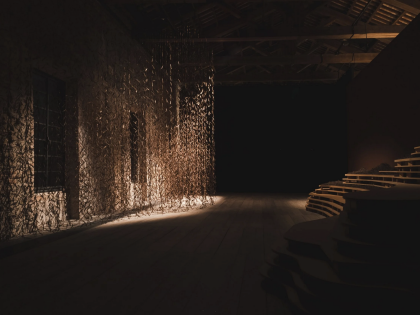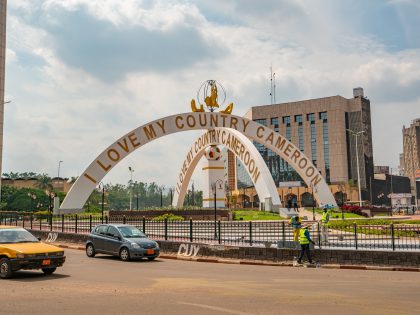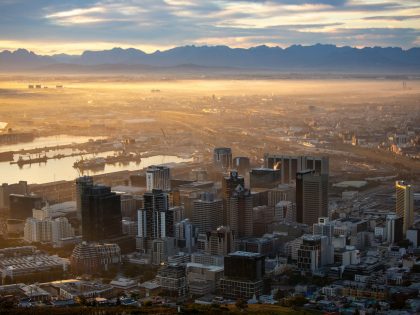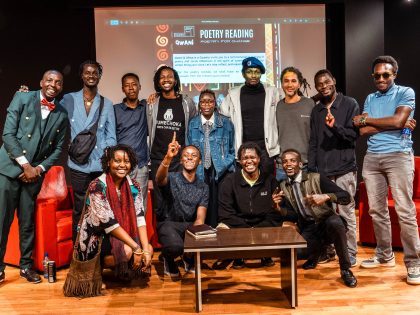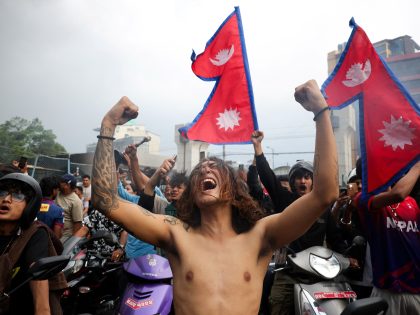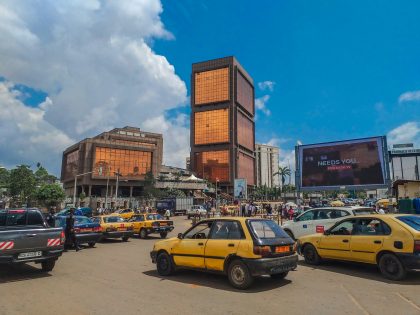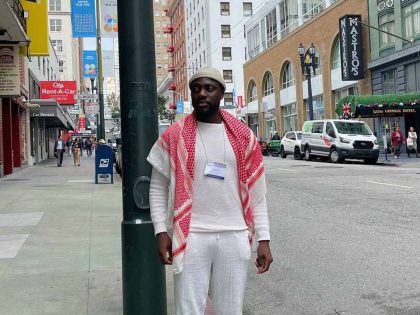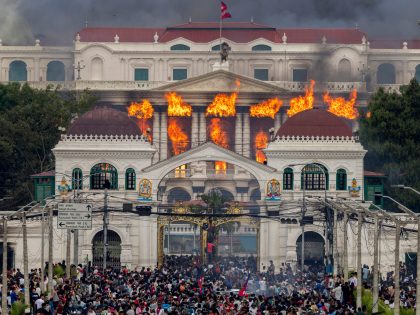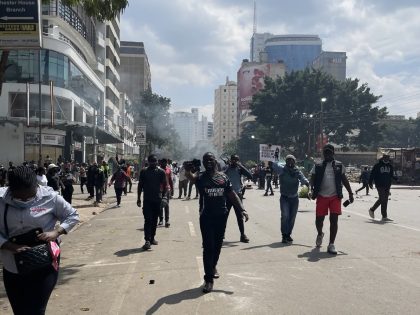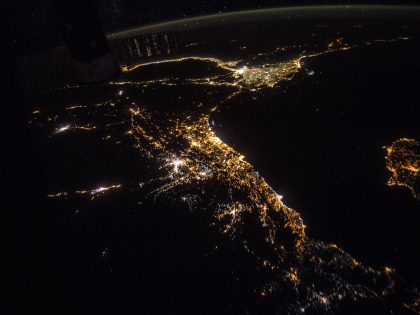In Search of Pancho Guedes
A new film goes in search of the renowned architect and some of his work in Maputo, capital of Mozambique in southeast Africa.

Still from the film.
Somewhere along the architectural and art deco eye candy scale between Miami Beach and Mogadishu sits Maputo. Mozambique’s capital wears its decorative dress well. It may be a touch over accessorized with Marxist Leninist Avenues and side street dwellings may be less about curvy shapes, lines and pastels than the practicalities of providing shelter and cheap pedicures, but even now as Chinese cranes create condominiums, the city retains an ornamental cache that continues to attract students of architectural history and post modernist design. In ‘Searching for Pancho’, a short film by South African filmmaker Christopher Bisset about the work of Pancho Guedes, perhaps the most renowned of all building designers — about five hundred structures all told — in what was then Portugal’s piece of the action, Lourenço Marques, is surveyed.
A cynical critic may however assume it was a part of a tourist information campaign, such are the similarities to the highly successful “Incredible India” promotion. A solitary student (played by Stephen Hitchcock) with stubble and a knapsack slips through the city, scribbling notes in his moleskin. He goes almost unnoticed, save for Pancho’s buildings and murals, which occasionally become animated and engage the curious young man. This is magical Mozambique. The cinematography is polished. A classical Spanish guitar score and upbeat percussion accompany the visuals. The architectural story is compelling. The cartoon animation is colorful and creative. The buildings are expressing themselves. Wonderful! So what is it that bugs me about this piece? If the buildings can be given license to bounce into life, then why not complement them with the energy of the people who actually live, play and work in them.
Lourenço Marques was already on the art deco map when 7-year old Amancio d’Alpoim Miranda Guedes arrived with his family from Lisboa in 1932, and ‘Pancho’, as he became known, absorbed Africans and their art into his work. It is one of his signatures, and what distinguishes his work from that of his American and European contemporaries. Pancho was blending the Movimento Moderno with Mozambican material at much the same time that multiracial Mozambique was becoming an unofficial fact of the colonial nation. Pancho had no official Frelimo affiliations, as far as I can tell, but he was known to have associated with Frelimo supporters and sympathizers. It was probably hard to not have had such relationships as an artist in such a restless late colonial entity. Perhaps his most important contribution in this context was his mentorship of the late Malangatana Ngwenya, arguably Mozambique’s most prolific painter and poet. Malangatana had been a ball boy at Guedes’s tennis club.
Pancho chose to pack up and leave Lourenço Marques when the masses and middle classes inserted carnations into the rifles of relieved conscripts on the streets on his motherland in 1974. Mozambique would soon go through serious convulsions and almost crack in a nasty civil war. The work of Malangatana Ngwenya best reflects this most horrific of violent periods. There is little call for architects and building designers during times of impending war, so far be it from to me suggest Pancho Guedes should have remained.
It was an added tragedy of Portuguese colonialism in Africa that their departure when it came was vindictive and ruinous. It is hard to know what contribution Pancho could have made had he stayed. Novelist Mia Couto — born a generation later than Guedes to Portuguese parents in Beira — did manifest and contribute to his newly free and independent homeland working as journalist for Frelimo, and later publishing novels, such as the acclaimed “Terra Sonâmbula” or “Sleepwalking Land”, which best tells the story of Mozambique’s 16 year civil war. But for Pancho the Chair of the Architecture Department at Witwatersrand University in nearby Johannesburg was a more appealing place to consider future building design. (Guedes’s appreciation of his esteemed position in Apartheid South Africa is not something of which I have knowledge. The change outsiders or those engaging or doing business with the copybook racist society that was Apartheid South Africa hoped to achieve remains an emotive debate for some.)
Pancho Guedes now resides in Sintra in Portugal, an almost Disney-like fairytale manifestation of Portuguese grandeur, where he continues to be inspired and work. His legacy is his immense contribution to Mozambique’s architecture, and Bisset’s film does do that work some justice. In that respect, Bisset has directed a slick and successful short art film.
There is I sense something more to this being just a successful reflection of Pancho Guedes’s career, however. Bisset’s short if ever selected by an ad agency could form part of a tremendous branding exercise and help turn Mozambique into a high-end tourist destination. Is that the subtext or potential upside for the Director here? Am I being too cynical, again? Probably. But as someone who spent a little time among Mozambicans I do not want to see their long dance of liberation end next to some high-powered dishwasher at the back of some random foreign-owned four or five star identikit hotel. Mozambique is growing at a rapid pace and tourism — architectural and urban tourism, eco-tourism, wildlife tourism and straight up sandy beach tourism — should be a part of what sustains that growth, but after witnessing the recent bread riots first hand, I am weary of the damage unfulfilled dreams can do to the psyche of a people. The danger is not the boom, but rather getting up close to it and finding it hard or impossible to access.
My raw reaction to watching Bisset’s tour of Maputo is that the director fails to get close enough to those who really bring Pancho’s buildings to life.
Bisset’s short first picks up speed in a Chappas or minivan. A pair of black hands has the wheel. The driver’s identity is immaterial, an excusable omission for arts sake, probably. However, what struck me as unusual was how spacious and salubrious the ride was. No shuffling of folks up and down the seats. One lady sits in front of our solitary traveller. They don’t interact. Again, they don’t need to. And they may not have been able to communicate in a common language anyway. But it is the appearance of our esteemed traveller’s headphones that first gave me serious pause. He’s on a journey to find Pancho, and expand his artistic mind along the way, one presumes. Yet somehow the stereo stands out as a symbol that suggests to me he is stuck or cocooned in his own world. Nothing wrong with that, but if there is something good to see, then surely there’s something to good to hear. Maputo may offer the usual cacophony of city traffic sounds, but it also comes with the most beautiful Bom Dias, Obrigados and De Nadas you could ever imagine. And those are words even a mute Montenegrin could understand. And yet our intrepid explorer has his ears muffed in a pair of Senheisers, when he for me should be listening to the streets. He’s doing his own thing, but that is not the way to pick up a little Shangaan, the local language of folks in Maputo.
A street merchant raises his wears. A map of Mozambique is a common two for one item on the streets of Maputo. The vendor is obscured. The rider issues a wave. This is not a film about street commerce. A small school kid passes by. Again I try to tell myself it’s not about the people, it’s about the art. A wounded war veteran and his four-wheel Zimmer frame also get a cameo in the foreground. It’s hard not to pass by a limping or legless man in Maputo. But to catch the expression on such a man’s face would also tell the story of a million dead Mozambicans. We don’t get to see the child’s or the man’s face, like we didn’t see the bus driver’s face.
I want to know the story of Pancho’s art because I know it was not conceived in a studio, but among the people on the streets. It then strikes you that Bisset’s Maputo just doesn’t seem as bustling or as busy as one remembers it. Perhaps Bisset had chosen to work in the rarefied early light when most folks, save for the padeiros, are still asleep. I remind myself for the fifteenth time that this is arty production, not a social documentary. All the same I did savour the view of the Cantembe ferry jetty as our student skipped along the wall of the Avenida 10 de Novembro. I fondly remember many an evening saying goodnight to the African Sun from that Corniche.
Despite my social and stylistic reservations, Bisset is serious about only portraying Pancho’s work. He avoids the temptation to incorporate a glimpse of the neoclassical Central Train Station as his protagonist walks away from one of the most iconic structures in Maputo. Eiffel’s Casa de Ferro is also excused the passing-by indulgence. Avenida 24 de Julho gets the prolonged shutter exposure treatment, perhaps if only to remind the viewer that there are folks in Maputo with places to be and people to see. There are 1.8 Million folks in metro Maputo, after all.
The film picks up speed the longer it goes as the solitary student slips in and out of building after building. The shapes, the faded colours, the details are all there, and not just in grandiose churches, but also in regular abodes designed by Pancho. The visitor scales a gate, climbs a magical stairwell and adjusts the washing on the roof of a Pancho apartment building to get a better view of Maputo. Pancho’s legacy is clearly there functioning for the people. There are fewer things more important than a good shelter. It’s a fantastic legacy. I would find it fun explaining to the current residents that they occupy homes that somehow combine the best of the ancient dwellings of Cappadocia with the futuristic home of the Jetson family.
Bisset’s student splays out across the back row of his minibus on his way out of town. He’s proud of his adventure. A couple of Pancho’s creations join for him for the journey. He’s had a terrific experience passing through Maputo discovering the work of Pancho Guedes. I enjoyed the film for what it was. I appreciated the skills of all those who contributed to it. I wish them luck with future productions. I only wish that the folks who were the souls of the buildings they came to visit had been given more than just cameos, props and tokens passing by on the screen. All this required was just one real and reciprocal local human connection, moment or touch.
